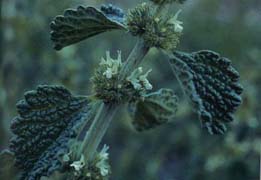Are there “good” and “bad” gardens?
Perspectives affect perception
As with any issue in the universe, the perspective of the entity viewing an issue relates to whether a circumstance is desirable or undesirable. All along the west coast, European Beach Grass was introduced for the purpose of sand stabilization. In the Oregon Dunes, this invasive is stabilizing the sand so well that within a century or two, the Dunes will cease to exist, being covered by vegetation. Unique genetics in the tree islands that have thrived through thousands of years of separation will be lost as they are mixed with those of the inland forest as it migrates westward. Death of a geologic feature means life to a biotic feature. Death to genetic strains means life to thousands more.
The Stewarded Landscape versus personal Property
In 19th century America, the stewarded landscape was an invisible feature. It was inconceivable to the settlers that the entire continent was influenced to maximum potential and biodiversity with little negative impact. If it wasn’t a garden of straight rows and lines, it was invisible. Therefore, because these landscapes were not being “cultivated” they were considered up for grabs, and the theft of Indian lands was thus justified as Manifest Destiny prevailed as a dominant paradigm through this time. By ass cash or grass, land was stolen, and fences put up, and cattle and pigs, rape and run forestry, and tilling began to take their toll upon the land. Is this good gardening for the even the settlers as the generations that followed them have been paying the price for their actions? We now have a legacy of lost old growth, biodiversity, and species, and have problems with erosion, invasive plants and animals, and out of control forest fires that burn even the soil.
Non-organic Local Seasonal Food Production
Before World War II, you could pretty much assume that all produce was organic as we know it: produced without herbicides, pesticides, genetic manipulation etc… After World War II, attention that was put into making chemicals for the war was directed home into developing industrial agriculture.
Nowadays, with certified organic produce being a fairly viable way to help insure the integrity of the food that you and your family eat (but not the seasonal applicability or local economic benefits!), folks will pay more for certified organic produce and other groceries. But organic certification carries with it a high price. Farmers have to pay lots of money and jump through many hoops that in many areas do not make agricultural or local sense. For example, chickens are not allowed to roam fields eating insects for 6 months before a crop is harvested, eliminating a common village method of pesticide.
Many small farms who grow their food organically or nearly organically choose not to go through the bother of attempting to get organic certification. Its really impossible to tell for sure who is really organic or not, even with certification, but often people who have contact with the farms such as buyers for coops and natural food centers have a fairly good idea about who follows the ideals or organic farming in their area. Ask! Visiting the farm is often a possibility, and often so is meeting the farmers who take their goods to local Farmer’s Markets.
Corporate Commercial Organics
Now what are we supposed to do? Wal-Mart now offers organic foods, as does Safeway, Fred Meyer, and other big box stores. Environmentalists and foodies everywhere are in a quandary as to how to respond to this paradox. When it comes down to it two facts are known: buying organic helps preserve land from being inundated with chemicals unncecessarily, and big box stores always disrupt local economies and encourage industrial monocrop farming practices that are draining and damaging to the landscape more so than farming that lets fields lie fallow, utilizes cover crops, and incorporates permaculture practices.
Illegal or illicit gardening practices
One of the most influential cash crops in America is Marijuana. Marijuana was made illegal primarily because of lobbying efforts by paper companies and emerging plastics companies who saw the development of hemp as a viable fiber for paper, plastic like material and fibers as a threat to their more industrialized manufacturing practices. It just wouldn’t do for farmers everywhere to make their own paper, clothing and other materials, that would cut out the middleman. Today in some areas such as Northern California, the state government and the federal government are at odds as to whether cannabis cultivation should be prosecuted.
In medieval times, having medicinal plants in your garden, particularly for women’s issues, or birth control, or having plants that were associated with magical practices grounds for the Inquisition to seize those lands, the people who lived their, and torture them until they confessed to witchcraft and were often executed via horrific means.
Today, the cultivation of Coca, a mild stimulant, made into the hard drug cocain, is very important to traditional peoples of South America, but often South American governments (and America) persecute Coca farmers (with American influence) for growing it. Extensive field spraying was utilized in Columbia. The CIA has their dirty fingers in the pots that make money from both sides of Cocain production: both the selling of it, and the slave labor from those who are prosecuted for its use and sale.
